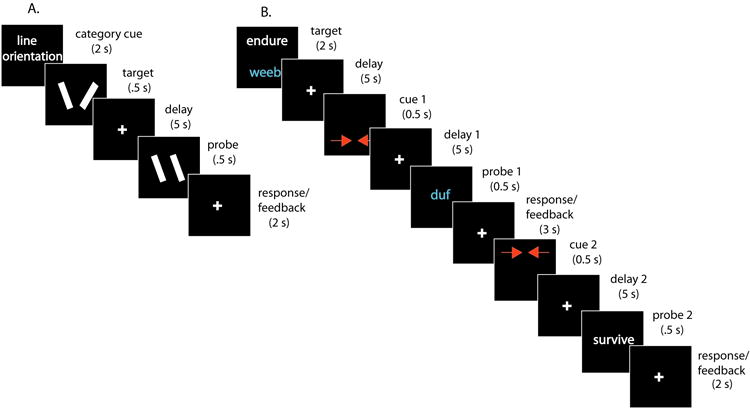Figure 1. Behavioral task schematic.

In Phase 1, participants performed a short-term memory task (A) for items from one of three categories: line segments (visual memory), vowel sounds in pseudowords (phonological memory), or word meanings (semantic memory). In Phase 2, participants performed a two-item short term memory task (B) for items drawn from the same three categories – the two items present on each trial were always from different categories. A cue indicated the behaviorally relevant item before each of the two probes, with half of the trials cuing the same item twice (repeat trials) and half cuing the two items in turn (switch trials, as in the example diagrammed above).
